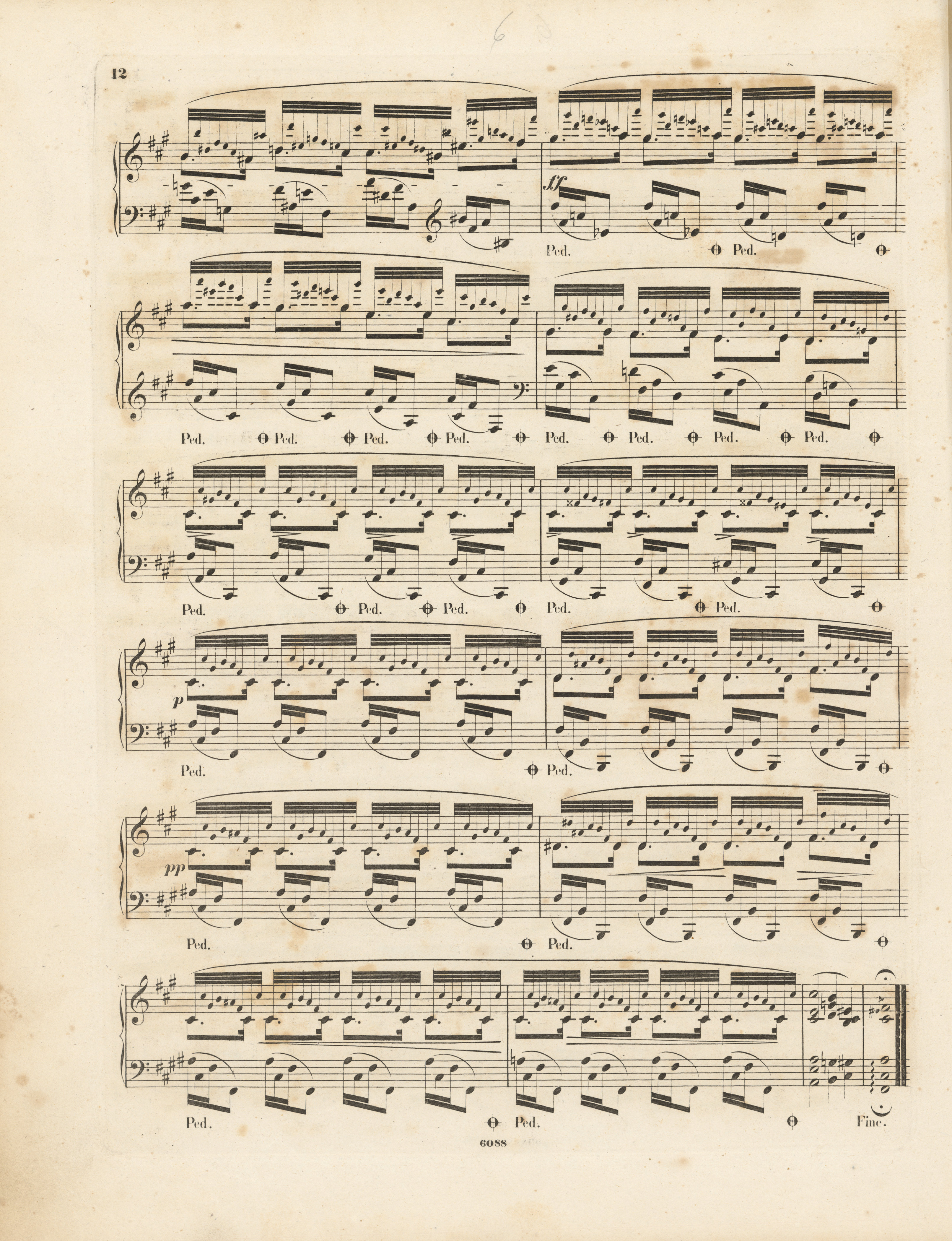



In A it is unclear which part the 6 accents placed in the narrow strip between the beams of the bottom R.H. voice and the L.H. figures' slurs are supposed to concern. The answer to that question also impacts the number of accents – if they concern the R.H., one can assume that they are included in the range of the repeat signs used to mark the 2nd and 4th beats of the R.H. This is how it was interpreted in all editions, where 8 marks were printed, although it was only EE that clearly assigned them to the R.H. part. According to us, the accents must apply to the L.H.:
- the topmost notes of the L.H. figures constitute here – the only time in the entire Prelude – a clear melodic sequence, not resulting from harmonic changes. Therefore, it is highly likely that Chopin wanted to draw the performers' and listeners' attention to it;
- in b. 25 Chopin wrote out the 2nd L.H. figure with notes, while in b. 26 all 4 figures, although, like in the R.H. part, he could have used repeat signs (an abridged notation of figures in both parts can be seen in A in b. 22 and 27-32). It seems highly likely that this is how he wanted to indicate which figures the accents are supposed to concern – all four in b. 25, but only the 1st and 3rd ones in b. 26. Using L.H. figures for that purpose clearly indicates that the accents are to apply to the L.H. It results in the following line of a separated tenor voice:
 .
.
The type of accents is another issue – in A (→FC) they are clearly long accents, which was not taken into consideration at all in FE (→EE) and was only partially (in b. 25) reproduced in GE.
Compare the passage in the sources »
category imprint: Interpretations within context; Differences between sources
issues: Long accents, EE revisions, Inaccuracies in GE, Inaccuracies in FE
notation: Articulation, Accents, Hairpins





